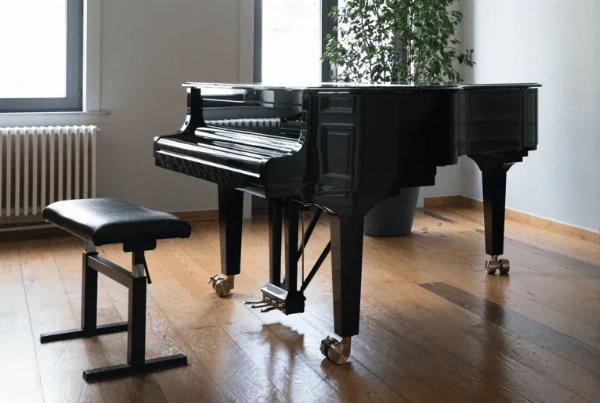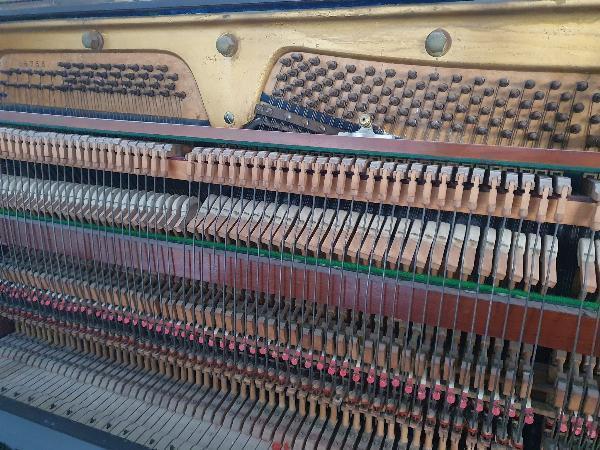Pristine Keys: The Art of Effective Piano Cleaning for Lasting Performance

Pianos are not only magnificent musical instruments but also intricate pieces of craftsmanship. Whether you own a grand, upright, or electric piano, regular cleaning is essential to maintaining its sound quality and longevity. Proper care and maintenance go beyond aesthetics—it preserves the fine-tuned mechanisms that allow your instrument to produce harmonious melodies. In this guide, we’ll explore the art of piano cleaning, highlighting the best practices to keep your instrument in top shape.
Why is Piano Cleaning Important?
Pianos consist of various components that can be affected by dust, dirt, and environmental conditions. The strings, keys, pedals, and action mechanism must remain clean and free from foreign particles to ensure optimal performance. Dust buildup, for example, can dampen sound and cause premature wear. Additionally, proper cleaning of the piano’s surface helps protect its finish, whether it’s a glossy or matte look, from scratches and discoloration.
Let’s delve into the specific steps for keeping your piano clean and functioning smoothly.
Step-by-Step Guide to Cleaning Your Piano
Gather Your Supplies
Before beginning, ensure you have the right tools. For effective piano cleaning, you’ll need:
A microfiber cloth (for cleaning and polishing)
A small brush or soft toothbrush (for hard-to-reach areas)
A feather duster or soft paintbrush (for dusting the strings)
Mild soap (optional)
Piano polish (optional)
A vacuum with a soft nozzle attachment (optional)
It’s essential to avoid using harsh chemicals, abrasive materials, or excessive moisture, as they can damage the finish or the internal components.
Dusting the Surface
Begin by dusting the piano’s exterior. Use a feather duster or a soft microfiber cloth to remove dust from the lid, sides, and legs of the piano. For stubborn dust, lightly dampen the cloth with water—ensuring it’s just damp, not wet—and wipe down the surface.
Cleaning the Keys
The keys are the most-used part of any piano, and regular cleaning helps keep them in good condition. Here’s how to clean them safely:
Use a slightly damp microfiber cloth to gently wipe each key from top to bottom.
Avoid using excessive moisture, as water can seep between the keys and damage the wood or plastic underneath.
For more thorough cleaning, you can use a mixture of mild soap and water. Wring out the cloth well before wiping the keys.
Clean one octave at a time to ensure thoroughness and efficiency.
For stubborn grime or fingerprints, lightly rubbing alcohol (in small amounts) can be used on a cloth to disinfect the keys without causing damage.
Pay special attention to both the white and black keys, as dirt can accumulate along the sides and edges.
Dusting the Inside of the Piano
Over time, dust can accumulate inside your piano, affecting its sound and playability. If you’re comfortable, you can clean some internal areas of your piano carefully. However, it’s advisable to leave more delicate tasks, like cleaning the action mechanism, to professional technicians.
Open the lid and gently dust the strings, dampers, and soundboard with a feather duster or soft paintbrush.
For hard-to-reach areas, a vacuum with a soft nozzle attachment can be used, but take care not to touch or displace any components.
Avoid touching the strings with your hands, as oils from your skin can cause corrosion.
Polishing the Piano Finish
After dusting and cleaning, you can polish your piano to give it a renewed shine. Use a specially formulated piano polish or a non-abrasive polish designed for wooden surfaces.
Apply the polish sparingly on a microfiber cloth, and gently buff the surface in circular motions.
Be cautious around the keys and avoid letting the polish drip between them.
For satin finishes, it’s best to avoid polishes and instead opt for a dry microfiber cloth to prevent smudges.
Maintaining the Pedals
The piano pedals can accumulate dirt and tarnish over time. Clean the pedals with a dry cloth first, then use a mild metal polish or a damp cloth with water to remove dirt. Make sure to dry the pedals immediately after cleaning to avoid rust or discoloration.
Piano Tuning and Maintenance: Beyond Cleaning
While regular cleaning is essential for maintaining your piano, don’t forget that tuning and mechanical maintenance are equally important. Scheduling periodic piano tuning and having a technician inspect the internal parts can prolong the life of your instrument. Pianos should be tuned at least once a year, depending on usage and environmental factors.
Professional Piano Cleaning Services
If you are unsure about cleaning certain areas of your piano, it may be worth considering professional piano cleaning services. Professionals have the expertise to clean intricate parts of your piano, such as the action mechanism and strings, without causing any damage.
Moreover, professional piano tuners often offer cleaning as part of their service. This can be especially helpful if your piano has not been cleaned in a long time or is experiencing performance issues due to dust buildup.
Preventing Dust and Grime on Your Piano
Regular cleaning is crucial, but preventing dust buildup in the first place is even better. Here are some tips to keep your piano clean for longer:
Cover your piano: When not in use, keep your piano covered to protect it from dust and dirt.
Avoid placing liquids near your piano: Spills can damage the finish and internal components, so keep beverages and other liquids away.
Clean hands before playing: Ensure you and anyone else playing the piano have clean hands, which will reduce the amount of dirt transferred to the keys.
Conclusion
Proper piano cleaning is vital for maintaining both the appearance and functionality of your instrument. By following these steps and being mindful of your piano’s delicate components, you can ensure that it remains in pristine condition. Whether you’re taking care of daily dusting or scheduling professional piano cleaning services, regular maintenance will keep your piano playing beautifully for years to come.
So next time you sit down to play, remember—those melodious notes are a reflection of your piano’s cleanliness and care!
Note: IndiBlogHub features both user-submitted and editorial content. We do not verify third-party contributions. Read our Disclaimer and Privacy Policyfor details.



